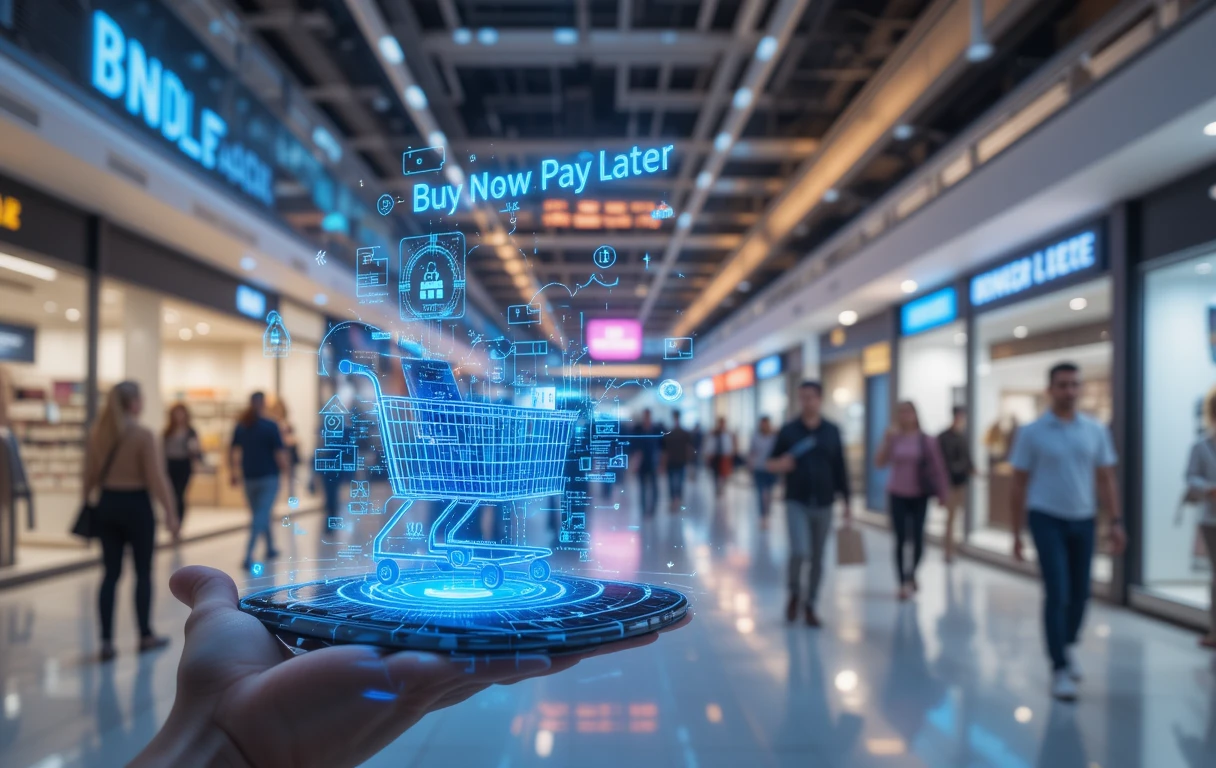The world of shopping has undergone a seismic shift in recent years, and at the center of this transformation lies a revolutionary fintech trend: Buy Now, Pay Later (BNPL). For many, the idea of purchasing something today and spreading the cost over manageable payments sounds like a dream come true. But as with any groundbreaking innovation, BNPL comes with its own set of perks, risks, and implications for the future of shopping.
In this blog, we’ll unpack the phenomenon of BNPL, explore how it’s transforming consumer behavior, and take a closer look at whether it’s here to stay. From its role in boosting financial accessibility to the concerns it raises about debt, we’ll break down everything you need to know about this game-changing trend.
What is Buy Now, Pay Later (BNPL)?
At its core, Buy Now, Pay Later is a modern payment solution that allows shoppers to split their purchases into interest-free or low-interest installments over a set period of time. Unlike traditional credit cards, BNPL services often come with fewer hurdles—such as no credit checks or annual fees—and cater to younger, tech-savvy consumers looking for flexibility.
Popular BNPL providers like Klarna, Afterpay, and Affirm have grown exponentially in recent years, partnering with major retailers across the globe. Whether you’re buying a new pair of sneakers, a laptop, or even groceries, BNPL makes large purchases feel more accessible without the immediate financial strain.
Why is Buy Now, Pay Later So Popular?
The rise of BNPL isn’t a coincidence. Several factors have contributed to its growing popularity:
1. Financial Flexibility for Consumers
Many consumers, especially Millennials and Gen Z, seek financial tools that offer flexibility without the strings attached to credit cards. BNPL enables them to budget effectively while enjoying the items they want right away.
2. Seamless Integration with Online Shopping
BNPL thrives in the digital age. As online shopping has surged, these services have become integral to e-commerce platforms, offering a frictionless checkout experience.
3. Low (or No) Interest Rates
Unlike traditional loans or credit cards, most BNPL providers offer interest-free payment options if installments are paid on time, making it an attractive option for budget-conscious shoppers.
4. Appeal to Younger Generations
With a distrust of traditional financial institutions and a preference for innovative solutions, younger shoppers see BNPL as a modern, consumer-friendly alternative.
How Does Buy Now, Pay Later Work?
Using BNPL is surprisingly simple. Here’s a step-by-step breakdown:
Step 1: Choose BNPL at Checkout
When shopping online (or in-store), customers can select a BNPL provider as their payment method.
Step 2: Instant Approval
The provider quickly assesses the shopper’s eligibility—usually without a hard credit check—and approves the transaction.
Step 3: Make an Initial Payment
Shoppers typically make a small upfront payment, such as 25% of the purchase amount.
Step 4: Pay in Installments
The remaining balance is divided into equal installments, often due bi-weekly or monthly, and can be paid through the app or linked bank account.
The Benefits of Buy Now, Pay Later
- Increased Sales: BNPL encourages shoppers to spend more, boosting average order values.
- Lower Cart Abandonment: Flexible payment options can reduce the number of abandoned shopping carts.
- Customer Loyalty: Partnering with BNPL providers helps retailers attract younger, repeat customers.
For Retailers:
- Instant Gratification: Shoppers can get what they need without waiting until payday.
- Simplified Budgeting: Smaller, predictable payments make large purchases less daunting.
- No Hidden Fees: When used responsibly, BNPL services often have no interest or hidden charges.
For Consumers:
BNPL isn’t just a fad—it’s solving real pain points for consumers and businesses alike. Here are the key advantages driving its success:
The Risks of Buy Now, Pay Later
As appealing as BNPL may be, it’s not without risks. It’s important to weigh the potential downsides:
1. Debt Accumulation
With the ease of access to BNPL, some consumers may overspend, leading to debt they struggle to repay.
2. Late Payment Fees
While many services are interest-free, missing a payment can lead to hefty fees and even harm credit scores.
3. Encourages Impulse Buying
The “buy now, worry later” mentality can encourage people to purchase items they don’t truly need.
Is Buy Now, Pay Later the Future of Shopping?
The short answer? Yes—and no. While BNPL has certainly carved out a significant space in the fintech ecosystem, its future depends on how it evolves. Here’s why it’s likely to stick around:
- Global Expansion: BNPL is growing rapidly, with adoption rates climbing in regions like Asia, Europe, and North America.
- Diverse Use Cases: Beyond retail, BNPL is expanding into travel, healthcare, and education, offering consumers even more flexibility.
- Regulation and Innovation: Governments and fintech companies are collaborating to ensure the sustainability and safety of BNPL services.
How to Use Buy Now, Pay Later Responsibly
To make the most of BNPL without falling into its pitfalls, follow these tips:
- Stick to a realistic budget and avoid spending beyond your means.
- Read the fine print to understand fees, interest rates, and payment schedules.
- Set payment reminders to avoid late fees or penalties.
- Use BNPL for necessary purchases, not luxury items you can’t afford outright.
Final Thoughts on Buy Now, Pay Later
Buy Now, Pay Later isn’t just a trend—it’s a testament to how fintech continues to reshape the financial landscape. While it offers undeniable convenience and accessibility, it also comes with responsibilities. For both consumers and retailers, BNPL presents an opportunity to embrace a more flexible, customer-centric way of shopping.
As with any financial tool, success depends on how it’s used. By staying informed, budgeting wisely, and leveraging the benefits of BNPL, shoppers can enjoy its perks without falling into its traps. So, is it the future of shopping? It very well might be.




